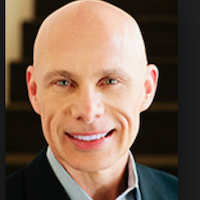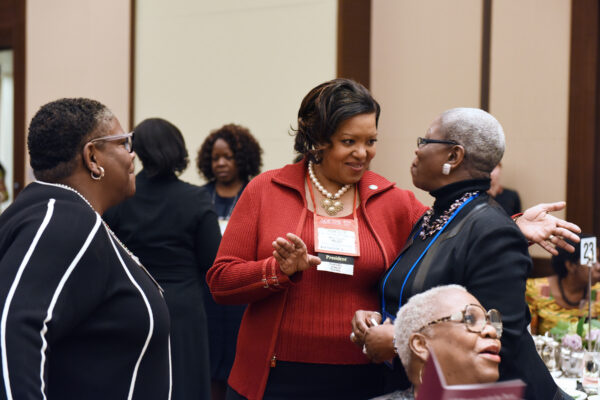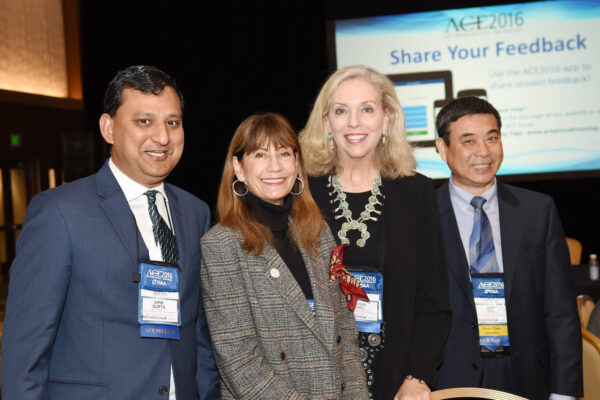Another provost leaves after just three years—the median tenure for provosts—and we open yet another search. We appoint an interim (probably the same person who served as interim during the last search), bring in another search firm, dust off the job description we used just a few years ago, and appoint another search committee. We then conclude the search by selecting an external candidate. Surely that person will bring that extra spark we just didn’t see in the internal candidates. Or maybe no one internally wanted the job.
This is just one challenge we have created by our lack of focus on not just succession planning, but sustainability and the overall impact of our colleges and universities. Frequent unplanned turnover is a problem for the entire institution, and it affects our ability to gain momentum and move forward. On a related note, our lack of planning for anticipated turnover as leaders approach retirement age is also a problem that we must address.
Median age and length of service
As you can see in the following chart from CUPA-HR’s 2019 Administrators in Higher Education Annual Report, the median age for every category of our campus leaders is over 50. These median ages in themselves are not necessarily a challenge, but when we view them as part of our succession planning and the long-term sustainability of our institutions, a potential challenge quickly emerges.

The median age of higher education administrators is 54, and the median age of our executive leaders (presidents and executive vice presidents) is 60. If we highlight just one of the typical leadership pathways for higher education, we encounter an interesting and potentially challenging dilemma:
- Most of our current presidents, with a median age of 61, served in a provost role before serving as president. The median age of provosts is 59.
- The majority of our provosts served as deans before serving as provost. The median age of deans is 58.
- The typical pathway to dean is through an assistant or associate dean role. The median age of our assistant and associate deans is 56.
Also of importance is the length of time incumbents are spending in these roles. The median tenure of leaders in administrative roles is eight years, with very little variance by group. If this sounds familiar, does it mean that there are not sufficient opportunities for advancement at your institution? Does it mean that the individuals in these roles have no interest in higher levels of responsibility? And if leadership positions are revolving doors at your institution, why?
Opportunity to create a more diverse leadership team
Succession plans that include looking within can help create a more diverse leadership team. More than half of our administrators are women, yet only 32 percent of presidents are women, and only 15 percent of our presidents represent a race or ethnicity other than White. This supports data reported through ACE’s latest American College President Study. Nearly 44 percent of our provosts are women, but only 12.3 percent are people of color. As our student population and the U.S. population become increasingly diverse, it is crucial that we create and sustain clear pathways that help women and people of color persist to become our next vice presidents, provosts, and presidents.
More vacancies and opportunities are definitely on the horizon. As we work to identify potential future vice presidents, provosts, and presidents, who are the women and people of color on your campus that should be mentored, sponsored, and encouraged to seek positions with greater levels of responsibility?

Call to action
What actions can higher education institutions take to ensure there is a diverse, prepared, committed pipeline of future higher ed leaders in place?
1. Not every search for a key leadership position should end with the selection of an external candidate. Sometimes, hiring an external candidate is an important strategy to help make needed changes to the internal culture. But if an external candidate is needed because there are simply no qualified or acceptable internal candidates, why is this? If no internal candidate wants the job, why?
Here are a few first steps to identify potential future leaders on your campus:
- Determine who on campus is interested and has the potential to be successful in leadership roles. Who are those high performers who are already invested in the mission, the culture, and the community? If a meaningful performance planning and review process is in place, identification of these high performers will be clear.
- Assess the current hiring practices for entry- and mid-level professional positions and associate/assistant deans. Search committees and hiring managers often focus almost exclusively on technical skills or academic credentials to fill the gap left by the departure of the former incumbent. But candidate reviews should also evaluate how individuals have applied skills and competencies in past roles and how they might be positioned for a career at the institution instead of a job at the institution.
- The board of trustees should require that the president, the president’s direct reports, and other vice presidents and associate vice presidents have documented succession plans in place. Regularly scheduled discussions between the board and the president and the president’s direct reports focus on this planning. Of course, there is no promise of promotion, but this intentional focus has created a level of accountability that is lacking at most colleges and universities. Adding this intentional focus also heightens the importance of learning and development for faculty and staff.
2. We must create different pathways to campus leadership roles. Since the median ages of our presidents, provosts, and deans are 61, 59, and 58, respectively, we must rethink our assumptions about the pathways that lead to these roles. The same is true for other campus VP positions. Looking externally is only going to become more challenging and competitive as these individuals retire or move on. Here are a few first steps to help create an internal pipeline of future leaders on your campus:
- Ensure that those who serve in faculty leadership roles at the department or campus level receive the acknowledgment and recognition they deserve. The minimal extra effort required to provide a meaningful acknowledgment could make the difference between a faculty member who views administrative roles (and administration) as a potential part of a career path and one who chooses to limit their involvement. Beyond acknowledgment, what other learning and development could be incorporated into the faculty experience?
- For provosts, frequently acknowledge that few higher education positions are as complex and challenging as the institution’s chief academic officer. If your institution is one with a median provost tenure of just three years, clearly assess the duties and responsibilities of the position. Is the portfolio of responsibilities too large? Are there too many priorities and a lack of clarity regarding the most important ones? For a first-time provost, identify a provost mentor from another institution to provide guidance and support during the first year (and potentially beyond the first year).
- For other vice president roles, a combination of core technical competence, strong leadership skills, and an understanding of the campus culture is critically important. We must invest in the development of leadership and decision-making skills for potential VP successors to prepare them to serve in these roles.
3. Look for opportunities to promote more women and people of color into campus leadership roles. More than half of higher ed administrators are women, but the majority are in the lowest-level leadership positions. Only 15 percent of administrative positions are filled by people of color, yet the percentage of people of color with a college degree is well over 20 percent. Here are a few first steps to increase the representation of women and people of color in campus leadership roles:
- Assess current hiring practices to heighten awareness of implicit bias. Hiring managers and search committee members need to fully understand how their biases impact their approach during the hiring process and ultimately shape how/why they choose the candidate they do to fill the position.
- Create programs and resources that help women and people of color prepare for positions of greater responsibility. All high-performing women and people of color should be paired with mentors and sponsors.
- Review the demographics and turnover of the campus workforce. Where are women and people of color succeeding and where are they not succeeding? What are the areas with the highest turnover of women and people of color? How can the practices of more successful campus departments be used in these areas? What development do the managers of these departments need to help them recruit and retain more women and people of color?
These are examples of efforts that should be incorporated into a comprehensive institutional plan. Such a plan should not just be a succession plan. The plan should be part of our call to action regarding the long-term sustainability, relevance, and impact of our colleges and universities. The workforce we create, engage, and retain ultimately determines our institution’s future.
All data referenced is from findings from CUPA-HR’s 2018 and 2019 higher education salary surveys.
If you have any questions or comments about this blog post, please contact us.



